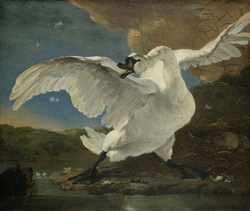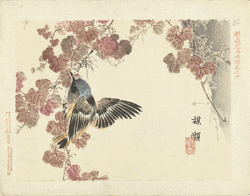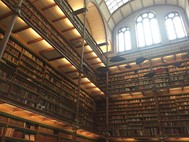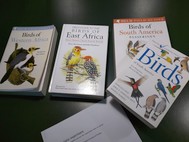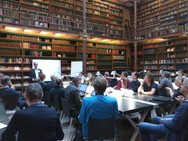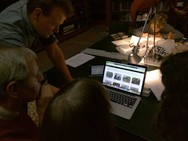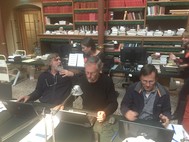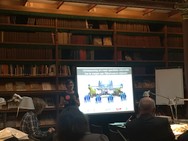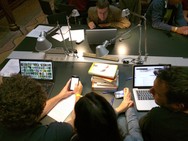Digital Birdwatching in the Rijksmuseum
Author: Jasper Oosterman
Sunday October 4th, World Animal Day, 40 ornithologists, bird watchers and bird enthusiasts assembled in the library of the Rijksmuseum in Amsterdam for digital birdwatching. These bird experts were invited to use their knowledge and skills to identify birds depicted on prints, paintings and other digital heritage objects. The event was an initiative of researchers from Delft University of Technology, VU University Amsterdam and the Centrum Wiskunde & Informatica (CWI), assembled in the COMMIT/ research project SEALINCMedia, together with the Rijksmuseum, Naturalis and Wikimedia.
The digital bird watching event attracted quite some media attention, both in paper media (Trouw) and digital media (RTL, Parool, Telegraaf) and was even featured on the Dutch TV news (NOS, from 10:49).
Both Rijksmuseum and Naturalis have extensive collections; The Rijksmuseum has a collection of over 1.2 million objects and Naturalis over 37 million, including many drawing and prints that depict birds. However, for many artworks the exact species of the birds are not yet known. Identifying these birds is not always easy. "Some birds can be clearly recognized", says Naturalis. "Others however require a trained eye to determine which species the artist depicted."
To support experts in identifying such species and adding description to these artworks researchers from Delft and Amsterdam in the SEALINCMedia project developed the annotation tool "Accurator" based on state-of-the-art research on Crowdsourcing and Human Computation, and Semantic Web and Linked Open Data. The Accurator tool is context sensitive, allowing people to add descriptions to parts of the artwork, and uses relevant bird datasources. This way Accurator can suggest both the common name, for example Mute swam as the general public would call it, or the biological name Cygnus olor as the expert would say.
The day was introduced by birdwatcher and conservator Erik Hinterding (Rijksmuseum) explaining the history of birds on artworks, the challenges and pitfalls of identifying such birds followed by Steven van der Mije (head Vertebrates Naturalis) who explained the history of the current biological naming scheme developed by Carl Linnaeus. On behalf of the SEALINCMedia project Lora Aroyo explained how to use Accurator after which the bird experts could start. The bird experts started enhusiastically followed by some lively debates on the depicted species or whether the artist even tried to illustrate a real bird. The experts consulted their home-brought reference books and online sources to match the birds on the artworks with the illustrated versions in their reference works. Thanks to these experts for many artworks the exact bird species are now know and results from this day will be made available in a later stage.
This digital birdwatching event however was not only to enrich the collections of the museums. The researchers in the SEALINCMedia project also used this to day gain insight how experts use and share their knowledge to enrich art collections and how Accurator can be made more effective and more user-friendly. Accurator is open for everyone to use on http://annotate.accurator.nl and more information on the SEALINCMedia research project can be found on https://sealincmedia.wordpress.com/.
Read also: Expertise from the crowd, Delta, February 04, 2014
http://delta.tudelft.nl/article/expertise-from-the-crowd/27782

